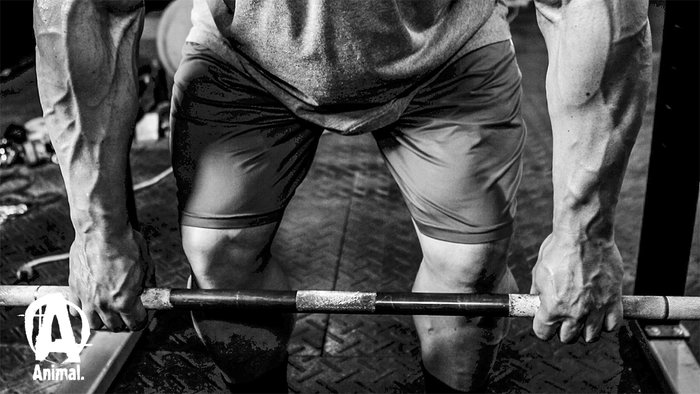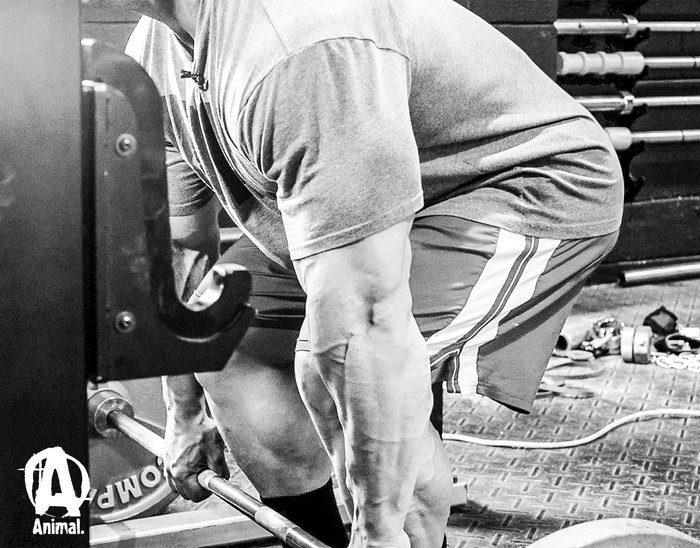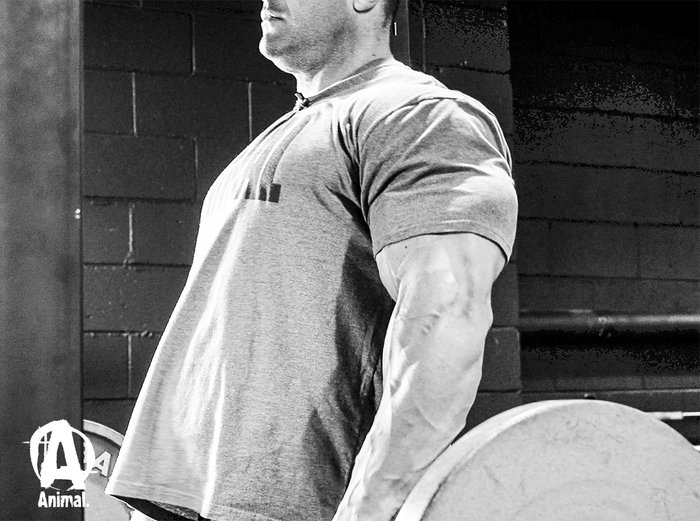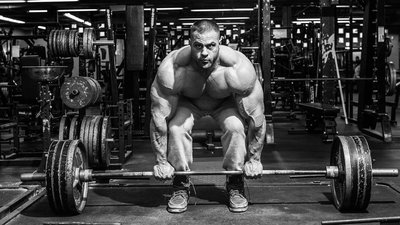The deadlift is where it all gets serious in the weight room. There are so many moving parts, and so many things to remember, that plenty of lifters would rather just skip it altogether. The number of people who claim that deadlifts "ruined their back" doesn't help anything, either.
So here I am, a bodybuilder—definitely not a powerlifter—speaking up in defense of the deadlift. Why? It's one of the best movements you can do, period. If you want to add muscle, it can help you. If you're looking to lose weight, it burns tons of calories. It will even help strengthen your lower back over time, as long as you do it right.
Why Learn the Deadlift From A Pro Bodybuilder?
Those of you who have studied the deadlift and made it an art form will likely be too advanced to benefit from most of my advice here. I'm thinking of my fellow Animal athletes like Dan Green and Pete Rubish, for example, who have already created complete deadlift guides and crushed heavy sets with the world watching.
But for the rest of us who are not focused on competing in the "big three" movements, you might find this info helpful, and find some surprising cues that will make you stronger and safer with the bar.
Why Deadlift from the Top Down?
I have always preferred to deadlift from the rack instead of the floor, for the simple reasons that it:
- I feel it not only allows me to be more forceful in the rep
- It also feels better in my lower back.
The deadlift is one of the only movements that normally begins at the bottom of the rep—hence the name. You don’t begin the bench press with the bar at the chest, nor do you normally begin the squat in the hole. In my experience, starting at the top of the movement allows you to better “load” the muscles involved in the movement.

If I had to guess, it’s probably a neurological thing. Lowering requires you to turn everything on—hips, core, hamstrings, lats—before actually doing the first rep.
Of course, some people prefer to start from the floor and of course, that’s fine too. The only thing I would advise against is resetting at the bottom of each rep. From a bodybuilding perspective, I think constant tension is preferable, and stopping each rep at the bottom to reset prevents that.
This top-down approach has earned me a lot of questions over the years, but I find this to be a strong, safe, way of lifting, and before you knock it, I recommend you try it. Of course this approach definitely requires a different set-up from a ground-up dead.
Here are the essential things to remember:
1. Bend at the Knees First, Not the Hips
Once I step back and set my feet, I bend my knees first—not my hips. Do not—I repeat, do not—start the movement by bending forward at the waist. You have to resist every temptation to simply bend over.
The bar should graze your thighs, just barely clear your kneecaps, and come as close as possible to your shins. The further the bar drifts forward, the greater the likelihood that the weight will touch the ground and not move back up.
2. Keep Your Chest Up
When you step out from the rack, think "chest up" right away. Then keep thinking it as you break at the knees.
This is a classic deadlift cue, but when you perform them top-down, it's even more essential. It's the difference between simply bending over—which is bad news and puts you at a serious disadvantage at the bottom—and loading your hips, legs, and glutes for action.

3. Keep Your Butt Down
You'll hear people say that cueing "butt down" makes for an overly squatty deadlift, but in action, I find that's not the case, particularly when performing reps top-down. As long as you keep your chest as high as possible, and the bar tight to your body, you'll find the right line for a conventional deadlift.
Ideally, keep your back at as steep an angle as possible, with your chest as high above your ass as your body will permit. If your chest is high, your ass should be down, and vice versa.

4. Think Push, Not Pull
It is essential to think about the deadlift as a pushing movement. Deadlifting as a push movement? Have I lost my mind? Bear with me. If you approach deadlifting as a pull movement, you are far more likely to destroy your lower back.
It is essential to make full use of your lower body—namely the hips, legs, and glutes—in this movement. The simple act of thinking "push" rather than "pull" turns this switch on for me.
Once you reach the bottom of the movement and the plates hit the floor, try to push the floor away using your heels. Some lifters find it helpful to imagine falling backward with the weight as they descend. Of course, with all that weight being held in front of you, you won't actually fall.
If your chest is up and ass is down, driving with your heels will force you to use your hips and glutes to drive the weight out of the hole rather than your knees and lower back. This is more powerful, and it is much safer.
5. Don't Squeeze Your Back Until the End
It is not until the top 25-30 percent of the lift that I will actively try to contract my back. Once the bar has cleared your knees on its way up and is approaching mid-thigh, begin to roll your shoulders back and emphasize the squeeze in your back.
As far as the back muscles are concerned, the majority of the deadlift is a static hold. You are doing all that you can to maintain posture and use the muscles of the lower body to move the weight until the back muscles finally have to contract.
To recap: At the bottom of the movement, forcefully push the floor with your legs. At the top of the movement, actively squeeze your back. Push, squeeze, push, squeeze, and so on.

Two Other Crucial Deadlift Details
- Even if you have to do it with extremely light weight, do it! Lifters often feel like they have to be moving 3, 4, or 5 plates in order for a lift to "count." Don't lift to look like a hero. Use the bar. Use a quarter or a single plate. Take your time with it. Master the movement. It's worth doing.
- Do it in your socks. If you come to the gym wearing some kind of running shoe with cushioning and a big heal, doing deadlifts in socks is far more stable because there's nothing that can shift. Furthermore, you bring yourself a tiny big closer to the ground. Try it, and over time, it'll be hard to go back.
Proper Form Not Maximum Power
While it's awesome that more lifters than ever before are doing deadlifts on a regular basis, it's crucial to practice the mechanics of proper form—not only for maximum power output and muscular development, but to ensure safety. Squat aside, the deadlift is one of the most technical lifts, and probably the one that's most likely to cause you injury if you fail to perform it properly.
However, perform the deadlift correctly, and you'll be setting yourself up to gain tremendous strength in your posterior chain. This will then carry over into other movements like squats and barbell rows. Whether you're training for maximum muscle gain, strength, conditioning, or even fat loss, the deadlift should always be a part of your program. Good luck, be strong, and train safely.

